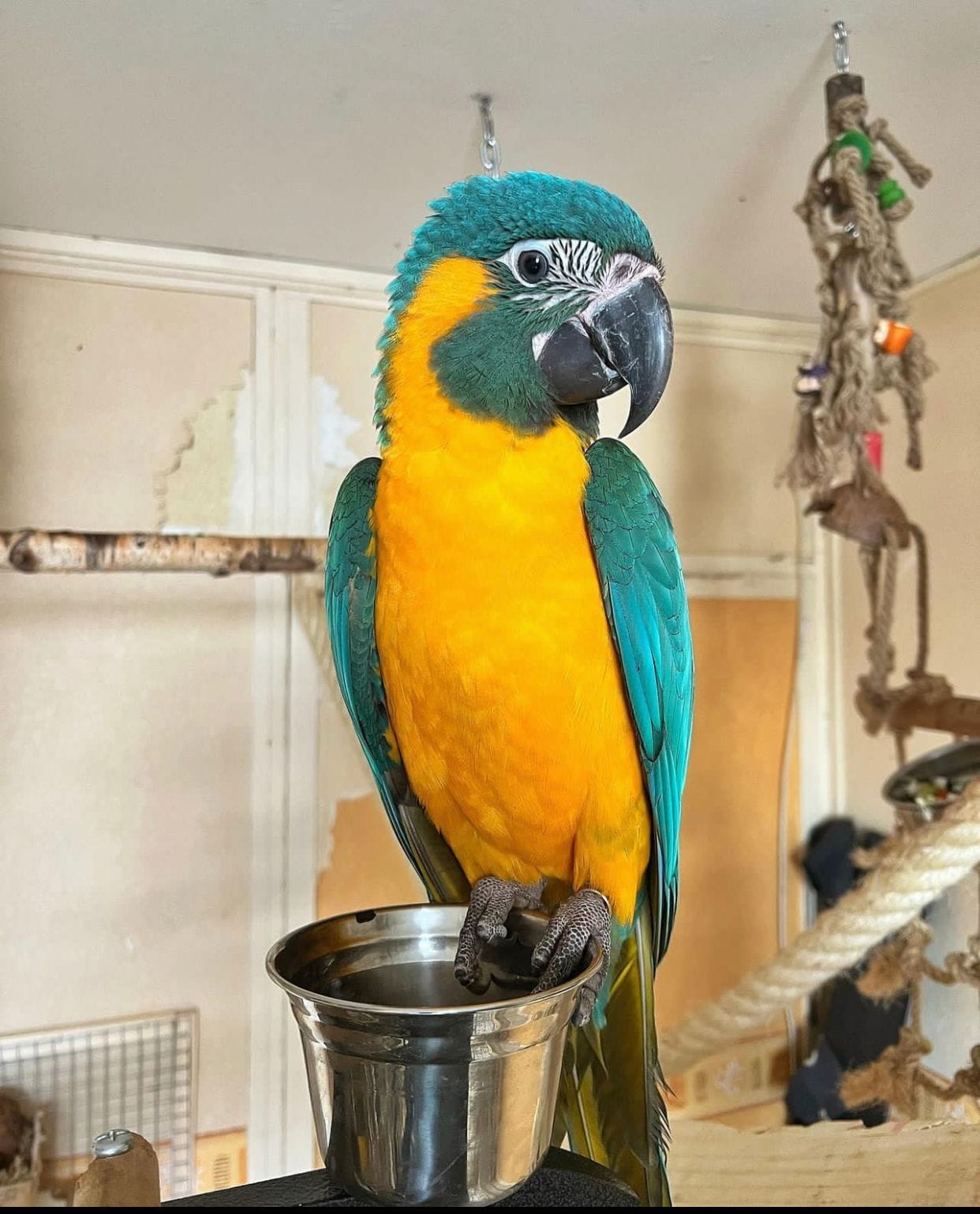4 Dirty Little Secrets About The Why Are The Glaceous Macaw And Hyanci…
페이지 정보

본문
 Why Are the Hyacinth Macaw and Glaucous Macaw So Similar?
Why Are the Hyacinth Macaw and Glaucous Macaw So Similar? Despite their distinct characteristics, these two bird species have a similar evolutionary history. Their shared dependence on palm swamps for nesting and roosting underscores the interconnectedness of nature and the need to conserve habitats that are endangered.
Despite their distinct characteristics, these two bird species have a similar evolutionary history. Their shared dependence on palm swamps for nesting and roosting underscores the interconnectedness of nature and the need to conserve habitats that are endangered.The hyacinth Macaw is easily identified by its bright blue feathers and yellow accents. Its beak, which appears be smiling, is capable of tearing coconuts and brazil nuts.
The Hyacinth Macaw
The hyacinth macaw price macaw is a magnificent bird that is also the largest parrot. It is striking blue with pops of yellow around the eyes and lower beak, making them appear to be smiling. It has a short sturdy legs that let it hang upside down or sideways. It also has a hooked beak with a hook that can be used to crack open coconuts. They are extremely intelligent and social, with a tendency to remain with one partner for the rest of their lives.
Hyacinth Macaws don't migrate and their range is contingent on the availability of palm species that are their primary food source. This is the main difference between macaws, and other parrots that are typically migratory.
The hyacinth Macaw is a prey species that eats lot of nuts from native palm trees. Particularly, the acuri and the bocaiuva. Their powerful beaks permit them to crack open these seeds. They also eat fruit and other plant material.
They are non-migratory, and their population is closely linked to the availability of the acuri and bocaiuva palms that provide the majority of their primary food source. This is a major distinction between macaws, and other parakeets that are usually migratory.
In contrast to the majority of parrots that prefer rainforests with dense tropical forests, the hyacinth Macaw can be found in less forested areas, such as palm swamps and grasslands that are flooded. The vast majority (90 percent) of the hyacinth Macaw population lives in the Pantanal region, which is the biggest wetland of tropical origin in Brazil.
Like all birds that are monogamous, hyacinth macaws too. They pick one partner when they are about 3-4 years old and stay with them for their entire life. They are extremely social animals and will often interact and communicate with humans. However it is crucial to remember that they are wild animals and should not be taken away from their natural habitat.
If you'd like to spend time with an intelligent, beautiful and spirited animal that can imitate your words, think about adopting your pet parrot from an aviculturist who breeds these amazing animals. Find a responsible aviculturist that is established is the best way to ensure that these incredible creatures will be cared for in the wild.
The Glaucous Macaw
The Glaucous Macaw, or Ara glaucus, is one of the most colorful birds in the Amazon basin. The large parrot is found in the tropical forests of South America. It has a blue-colored top and yellow underparts. This bird is extremely rare and classified as Critically endangered. The cause of the decline of this bird is most likely the capture of live adults for the trade in wild birds, and the mass felling of palms called yatay (Butia yatay) which appear to be its primary food source.
The name of this bird comes from its strikingly blueish hue, which can be described as light turquoise to azure in color. The underparts are yellowish, and it has a grey head. It is smaller than the Lear's macaw Pet store (buymacaw39854.ourcodeblog.com) and more slender than the macaws of hyacinth.
In addition to being a beautiful bird, the glaucous Macaw is also an icon of hope for those in the Amazon Basin. The glaucous macaw is expected where to buy macaw be found in the wild very soon and populations will be restored. This will ensure the future of this magnificent species.
Although the glaucous Macaw is thought to be extinct, several reports of its reemergence have been reported over the years. In February 1992 the female specimen was found at Customs in Britain. It was an animal that was kept in a few of the world's most well-known Zoos. At the time, it appeared to be a real Glaucous Macaw.
However, this supposed authentic glaucous macaw was later revealed to be a hybrid of Lear's and hyacinth macaws. In addition, its azure color was actually more like that of the hyacinth macaw and was created for the purpose of breeding hybrids.
Even if the glaucous macaw does come back to the wild it is highly unlikely that it can breed and produce healthy offspring. The bird has been threatened for a long time. It could be tragic if this beautiful tropical giant disappeared forever.
The Macaw's ancestors
Macaws can form a strong relationship with their humans and be affectionate. They are extremely vocal birds, with many different calls and songs. They enjoy imitating sounds and voices, especially those of their human companions. Macaws who live with humans can even learn to imitate words. The loud, shrieking sounds that macaws emit are their natural method of communicating with other members of their family or to signal danger. They will call for 5-10 minutes a few times a day.
If a pair of Macaws form a bond they will stay together until one of the macaws dies. They will preen feathers of each other and roost together in the evening. Every year, they also mate and lay eggs in a nest that is constructed in the tree or a dirt hole in the cliff face. The mother incubates the eggs for 12 weeks and the male gathers food and shields chicks from predators.
Humans began to interact with macaws, they began to train them and used macaws as companion birds. They were regarded as an emblem of love and power, with their powerful beaks and vibrant blue feathers. Many believed that a macaw would tell them the future's secrets or answer their prayers. They were also used to scare away crocodiles and snakes by making their shrieking sounds.
There was no way to know how many wild glaucous Macaws were in existence for so long. The records revealed that there were a few in captivity, but nobody was aware of their origins or the date they were born. One famous bird was at Paris"Jardin d'Acclimatation" from 1886 until 1905 while another was a zoo in Buenos Aires from the 1920s until 1936. Despite these early records it was widely believed that the glaucous Macaw was extinct.
In 2010, analysis of isotopes in macaw feces and eggshells revealed that the glaucous macaw prices does still exist in the wild in northwestern Mexico. The findings of the study were published by Science. The authors suggest that macaws with glaucous likely originated from a population located in the Paquime region in northern Chihuahua. The apparent longevity of the birds is due to their ability to adapt to their surroundings. They are able to survive in dry desert conditions for example.
The Future of the Macaws
Parrots are able to adjust to their surroundings in a fascinating way. In the wild, parrots can travel for [Redirect Only] miles to find mates or nesting sites. They also can mimic human speech. Their feet are designed to allow them to perch and climb in trees. They where can i buy a macaw even carry food in their beaks.
However, despite these abilities Parrots haven't been domesticated the same way that dogs and Hyacinth macaw price cats have. They are wild creatures and need to live in the same way as their ancestors did. Due to their wild nature, if you are planning to bring a parrot into your home, ensure you are doing it with a lot of thought and consideration. Parrots can be noisy and large and they can cause harm to your home and furniture. They are also listed on CITES because of excessive collection for pet trade and habitat loss.
The spix macaw for sale's Macaw is among of the most successful reintroduction projects. It was believed to be extinct until Helmut Sick, his field assistant Dante Teixera and their team discovered three of them in 1974 near Formosa do Rio Preto. At the time of the discovery, the only pair of birds in captivity was in Al Wabra, Qatar.
At a meeting in the city of Sao Paulo, Purchase and other conservationists agreed that the best solution was to release captive macaws into the wild. They needed to do this fast, however, since the number of breeding pairs was low. Additionally, they had to create separate lines at the different breeding centers to ensure that one pair didn't swamp the whole population with its genes.
Conservationists then began searching Brazil for Spix's Macaws which were in private ownership and could be returned to the wild. Owners were initially reluctant because they feared prosecution for violating a law that banned the export of animals. However, slowly, "one by one, people began to come forward," says Kiessling.
- 이전글10 Healthy Habits To Use Buy A Driving License 25.02.19
- 다음글Buy Driving License Category A Online Tips To Relax Your Everyday Lifethe Only Buy Driving License Category A Online Trick Every Individual Should Be Able To 25.02.19
댓글목록
등록된 댓글이 없습니다.





